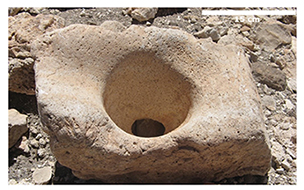Article contents
Tulán-52: a Late Archaic ceremonial centre at the dawn of the Neolithisation process in the Atacama Desert
Published online by Cambridge University Press: 26 October 2018
Abstract

Excavations at the Late Archaic site of Tulán-52 (3450–2250 BC) in the Atacama Desert of Chile revealed what was initially considered to be a very early semi-sedentary settlement. New investigations into these earlier excavations, however, show evidence for structural and organisational characteristics that overlap with those found at the nearby ceremonial site of Tulán-54, dated to around two millennia later. The reinterpretation of Tulán-52 suggests that early monumentalism in the Puna de Atacama may reflect the emergence of social complexity among late hunter-gatherers—a development that led to, rather than resulted from, the process of Neolithisation.
- Type
- Research
- Information
- Copyright
- © Antiquity Publications Ltd, 2018
References
- 4
- Cited by


